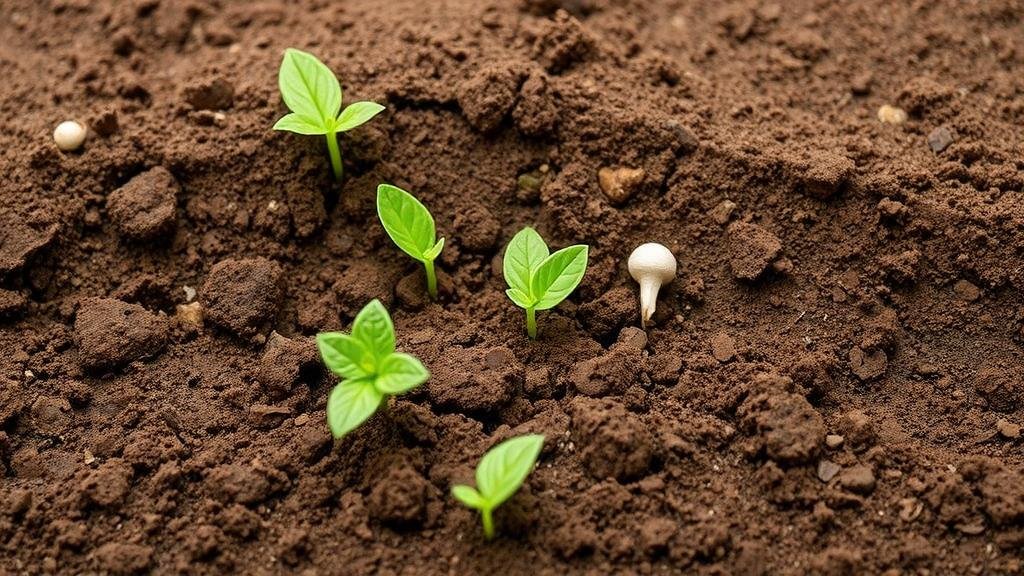How to Use Plant Growth Patterns to Identify Soil Disturbance From Buried Relics
Understanding Plant Growth Patterns as Indicators of Soil Disturbance
Soil disturbance from buried relics, such as artifacts or structural remnants, can significantly impact local ecosystems. Various botanical indicators can signify changes in soil conditions due to these disturbances. Utilizing plant growth patterns helps land managers, archaeologists, and ecologists assess and mitigate the ecological effects of buried relics. This article explores how to decode these patterns effectively.
The Relationship Between Vegetation and Soil Health
Vegetation growth is closely tied to soil health, which encompasses not only nutrient levels but also factors like moisture retention, pH balance, and soil texture. Disturbances in the soil can manifest in various physiological responses in plants, altering growth rates, species presence, and distribution. For example, compacted soils often lead to stunted plant growth, whereas disturbed soils may allow for invasive species to thrive due to lower competition.
- Healthy soils tend to support diverse plant communities.
- Disturbed areas might show dominance by certain hardy but less desirable species.
Identifying Soil Disturbance through Vegetation Changes
Specific changes in plant growth patterns can signal soil disturbances. Key indicators include:
- Species Composition: A shift towards opportunistic or invasive species can suggest soil disturbance. For example, areas with an increased presence of dandelions (Taraxacum officinale) may indicate localized soil issues.
- Growth Form Alterations: Stunted plants or unusual growth forms, such as a proliferation of rhizomes in perennials like mint (Mentha spp.), can hint at subsurface anomalies.
- Phenological Changes: Earlier flowering times or altered fruiting patterns can point to environmental stresses induced by soil alterations.
Case Studies and Real-World Applications
Several scholarly studies have highlighted the effectiveness of using plant growth patterns to detect soil disturbances caused by buried relics. One notable case involved the excavation of a historic battlefield in the United States, where researchers noted that the disturbance created by buried artifacts led to an increase in wild grasses and a decrease in native wildflowers, such as the purple coneflower (Echinacea purpurea). This change provided crucial insights into both the historical landscape and ongoing ecological shifts.
In another study conducted in an archaeological site in Europe, the analysis of vegetation surrounding a buried Roman villa revealed patterns of soil compaction and nutrient depletion that directly correlated with a limited variety of plant species. These findings informed restoration strategies aimed at establishing pre-disturbance plant communities.
Technological Aids in Identifying Vegetation Patterns
Modern technology has advanced the ability to analyze plant growth in the context of soil disturbance. Remote sensing techniques, such as aerial imaging and satellite technology, enable researchers to monitor vegetation changes over large areas, providing a macro perspective that can guide ground-level investigations.
- Infrared Imaging: This technique can reveal differences in plant health and stress not visible to the naked eye, allowing for a more precise identification of disturbed areas.
- GIS Mapping: Geographic Information Systems can integrate various geographical and biological data, helping to visualize relationships between plant patterns and soil anomalies over time.
Actionable Takeaways for Practitioners
For those involved in ecology, archaeology, or land management, understanding plant growth patterns as indicators of soil disturbance is crucial. Here are practical steps to consider:
- Conduct regular vegetation surveys to establish baseline data for future comparisons.
- Use technological tools, such as GIS and remote sensing, to enhance data collection and analysis.
- Collaborate with multidisciplinary teams, bringing together ecologists, archaeologists, and soil scientists for comprehensive assessments.
Conclusion
Using plant growth patterns to identify soil disturbance from buried relics is a vital tool for ecological preservation and archaeological integrity. By understanding the intricate relationships between vegetation and soil conditions, practitioners can develop informed strategies to mitigate disturbances, preserve biodiversity, and promote healthy ecosystems.


